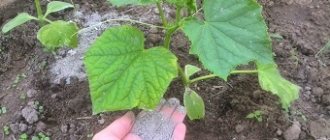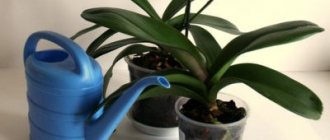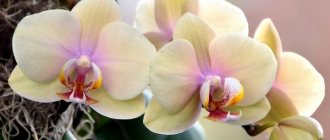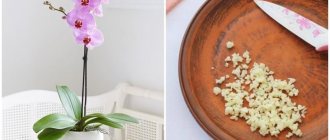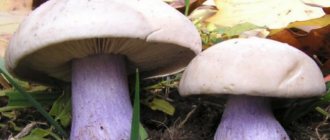04/19/2019 Michur Ivanov Garden and vegetable garden Many gardeners, wanting to help their indoor plants be enriched with useful substances, buy expensive fertilizer compounds. However, there is a simple and inexpensive means for feeding home flowers, the effect of which will be no worse than the advertised compositions. We are talking about castor oil. It turns out that it can be used to improve the condition of indoor plants. We'll look at how to water flowers with castor oil in this article.
What is this product?
Castor oil is obtained from a plant called castor bean. The culture itself is extremely poisonous; consumption of its fruits, even in small quantities, can lead to death in humans. But during the production of a castor bean product, all toxins are inactivated, so that the final composition becomes harmless, and sometimes even beneficial.
Castor oil is a mixture of triglycerides, linoleic, oleic and ricinoleic acids. The name apparently comes from the word "castoreum", meaning in English beaver stream, which was replaced with the oil in question. The product is also sometimes called ricin oil.
The consistency of the substance is a viscous transparent or yellow liquid. The smell is weak and the taste is unpleasant. The substance freezes at -16 °C and boils at +313 °C. The product does not oxidize in the light, does not dry out, and when burned, disappears without a trace; petroleum products do not dissolve it.
When castor oil gets into the soil:
- Accelerates the ripening of buds.
- Activates plant regeneration.
- Acts as an antibacterial agent.
- Accelerates the delivery of nutrients from the soil.
- Helps plant growth.
- Restores lifeless flowers.
- Accelerates the process of cell division.
- Improves soil composition.
Impressive anti-inflammatory properties
Ricinoleic acid is the main fatty acid found in castor oil and has impressive anti-inflammatory properties.
Research has shown that when this oil is applied topically, it reduces inflammation and relieves pain.
The pain-relieving and anti-inflammatory properties of castor oil may be especially beneficial for patients with an inflammatory disease such as rheumatoid arthritis or psoriasis.
Animal and test-tube studies have shown that ricinoleic acid reduces pain and swelling (10).
One study found that treatment with a gel containing ricinoleic acid resulted in a significant reduction in pain and inflammation when applied to the skin compared to other treatments (11).
A test tube test in the same study showed that ricinoleic acid helped reduce inflammation caused by human rheumatoid arthritis cells more than other treatments.
In addition to castor oil's potential to reduce inflammation, it may help reduce dry and irritated skin in people with psoriasis due to its moisturizing properties.
Although these results are promising, human studies are needed to determine the effects of castor oil on inflammatory diseases.
Summary:
Castor oil is rich in ricinoleic acid, a fatty acid that has been shown to help reduce pain and inflammation in test tube and animal studies.
Recipes for use
Feeding flowers with castor oil can be done in several ways. Next, various recipes will be offered.
First option:
- Add a teaspoon of oil to a liter of settled water. It is better to mix in a spray bottle.
- During the fertilization process, the plants are first watered with water to moisten the soil and thus protect the roots from burns.
- Shake the container until the greasy circles disappear.
- Two hours after watering, the shoots and soil are treated with castor oil solution from a container with a sprayer.
Treatments are carried out during the formation of buds and during the active growing season.
Be sure to take into account the characteristics of the plant itself and the slowdown in winter growth.
Fertilizer based on castor oil
When replanting plants into new soil, the feeding effect lasts for several months. After the expiration date, the flower plantings starve and require additional feeding to continue their life.
Frequent replanting injures the plants.
It is impossible to carry out the procedure after each depletion of the soil. The solution is to additionally feed the flowers.
Castor oil as a fertilizer for flowers is an inexpensive, highly effective preparation for indoor plants with a lot of nutrients. Acts quickly and effectively. Visually, you can evaluate the positive effect on the crop: the color of the leaves becomes rich, the edges become smooth, the trunk becomes strong; flowering is abundant, the buds are dense and full.
It is necessary to adhere to the established dosages. Oversaturation can cause death of plantings. Castor oil, from which castor oil is produced, is an unsafe plant: just 8 seeds can kill a person. This species is recognized as the most poisonous in the world and is listed in the Guinness Book of Records. Refining castor oil removes the toxicity. But you need to be careful with the application.
Feeding recipe
Fertilizing with castor oil is a simple process. If you follow the general recommendations, the plant will receive deep saturation and gain useful substances. It is effective to use additional oils to feed crops.
Simple
- Leave drinking water for 3 days.
- Add a teaspoon of castor oil to a liter of water.
- Stir until the oil is completely dissolved.
Fertilizing can be applied in two ways:
- pour under the root (effective during flowering);
- spray the leaves with a spray bottle.
Plants should be fertilized regularly every 5 days until complete recovery.
The recovery process can take up to 2.5 months.
If necessary, additional fertilizing can be done.
An excellent result is visible on the leaves of violets, geraniums and orchids: they become shiny, and the inflorescences actively grow and rise.
Combined
To enhance the beneficial effect on indoor plantings, fertilizing can be applied in other ways:
- Instead of ordinary water, use the juice formed after defrosting meat products.
- Replace half of the water part with cow's milk in equal proportions.
- Add humus, mullein, and manure to the solution.
- Mix wood ash with the prepared suspension.
Such methods will enhance the positive effect of nutrition on the entire plant system.
Feeding rules
There are basic conditions for using castor oil as a fertilizer:
- It is necessary to stir thoroughly. If undissolved oil concentrate gets on the plant, it will die due to burns.
- Feed during the flowering period or before it (regardless of the number of such periods of crop development). For those that bloom all year round, fertilizer is applied once a month: this is enough to prevent diseases.
- Use immediately after preparing the suspension, after shaking and breaking the contents into small fractions.
- The water must be settled or mineral without gas.
- Two hours before applying the castor solution, water the soil surface generously. This will serve as additional protection against possible burns to the root system and green plant parts.
- Make sure to use fertilizer. Inexperienced gardeners confuse plant suspended animation with wilting. The sleepy state is temporary; when it occurs, culture does not require intervention. In this case, feeding will harm indoor plants.
Second recipe for fertilizer
You can prepare fertilizer with a large amount of nutrients. For this purpose, you should mix castor oil not with water, but with useful solutions. The necessary components are available in every home. For example:
- Castor oil for flowers is mixed with the liquid remaining after defrosting the meat.
- Can be combined with manure and other organic fertilizers.
- Add milk to the castor oil.
- A mixture of oil and wood ash is useful.
Before fertilizing, it is important to make sure that the plants really need it. You should not fertilize during hibernation, as this can harm the flower.
Mandatory conditions for the use of castor oil
In order for the fertilizer to be beneficial, you should follow some rules:
- Stir the oil thoroughly in water or other liquid. Otherwise, if a drop of undissolved oil gets on the plant, it will cause a chemical burn.
- It is very important to adhere to the dosage and timing of fertilizing. If the plant blooms, it is fertilized before and after this period. Fertilizing is carried out no more than once a month.
- The prepared solution of castor oil for flowers is used immediately, shaking at the same time.
- Water for preparing fertilizer is taken to stand for a week.
- During the period of suspended animation, no additional feeding is applied.
Precautions when using castor oil
Many people use castor oil to treat a variety of problems, either by taking it orally or by applying it to the skin.
Although castor oil is generally considered safe, it can cause adverse reactions and unwanted side effects in some people.
- May induce labor : It is used by medical professionals to artificially induce labor. For this reason, women at all stages of pregnancy should avoid consuming castor oil (21).
- May cause diarrhea : Although it can be effective in relieving constipation, you may experience diarrhea if taken in high quantities. Diarrhea can cause dehydration and electrolyte imbalances.
- May cause allergic reactions : Castor oil may cause an allergic reaction in some people when applied to the skin. Try applying a small amount to a small area of skin first to see how your body reacts (22).
Summary:
Castor oil may cause side effects such as allergic reactions and diarrhea in some people. It can also stimulate labor, so pregnant women should avoid taking it.
What to consider when choosing a product?
To purchase high-quality castor oil, you should contact a pharmacy chain. You should not buy the product at unverified retail outlets, since there it may be diluted with aromatic components. Only high quality oil is suitable for fertilizing.
To check the authenticity of castor oil, add a small amount of it to a glass of water. The natural product does not form an oil film on the surface.
The shelf life of castor oil is 2 years. All beneficial properties of the oil are preserved during this period. It must be stored in the refrigerator or other cool place.
When it comes into contact with the skin, castor oil does not cause irritation unless there is an individual intolerance to the substance. However, it is better to wear protective gloves when using it.
Keeps your hair and scalp healthy
Many people use castor oil as a natural hair conditioner.
Dry or damaged hair can especially benefit from an intense moisturizer such as castor oil.
Regularly applying oils like castor oil to your hair helps lubricate the hair shaft, increasing flexibility and reducing the chance of damage (19).
Castor oil may benefit those who experience dandruff, a common condition characterized by a dry, flaky scalp.
Although there are many different causes of dandruff, it is associated with seborrheic dermatitis, an inflammatory skin condition that causes red, scaly patches on the scalp (20).
Due to castor oil's ability to reduce inflammation, it can be used as an effective treatment for dandruff caused by seborrheic dermatitis.
Additionally, applying castor oil to your scalp will help moisturize dry, irritated skin and may help reduce flaking.
Summary:
The moisturizing and anti-inflammatory properties of castor oil make it an excellent option for keeping hair soft and moisturized, and reducing the symptoms of dandruff.
When should you water flowers with castor oil?
Indoor plants, unlike their garden counterparts, are limited by the size of the pot. And sometimes they lack vital nutrients. In this case, castor oil will come to the aid of the gardener. It can revive a sick or weak plant.
The use of castor oil for flowers is relevant in the following cases:
- if the plant stems break;
- leaves wither for no apparent reason;
- the green part of the flower has drooped;
- plantings do not increase growth;
- after frequent replanting of indoor flowers;
- when the root system is damaged.
If the listed symptoms are observed, the plant will need at least three months to recover. Watering flowers with castor oil can successfully replace the use of the well-known composition "Epin".
Castor oil will make even the most problematic indoor plants bloom.
Hello! Surely you also have indoor plants that just don’t want to bloom. How to force them? Today I will talk about the use of castor oil. This is a natural product that acts as an environmentally friendly stimulator for the flowering of domestic plants
.
Castor oil is made from castor beans. It contains many useful substances, which together cause plants to produce buds. I used castor oil in practice. And, lo and behold! My slow-witted hoya, a couple of varietal balsams, and an anthurium that had been sitting idle in a pot for a long time bloomed. Therefore, I am inclined to believe in the effectiveness of this recipe. That's why I'm sharing it with you.
I’ll say right away that this is a folk remedy. Its effectiveness is not supported by botanical research. It may not work for you. If you have already fed flowers with castor oil, please share your experience in the comments to the article. It will be interesting for both me and other readers)



